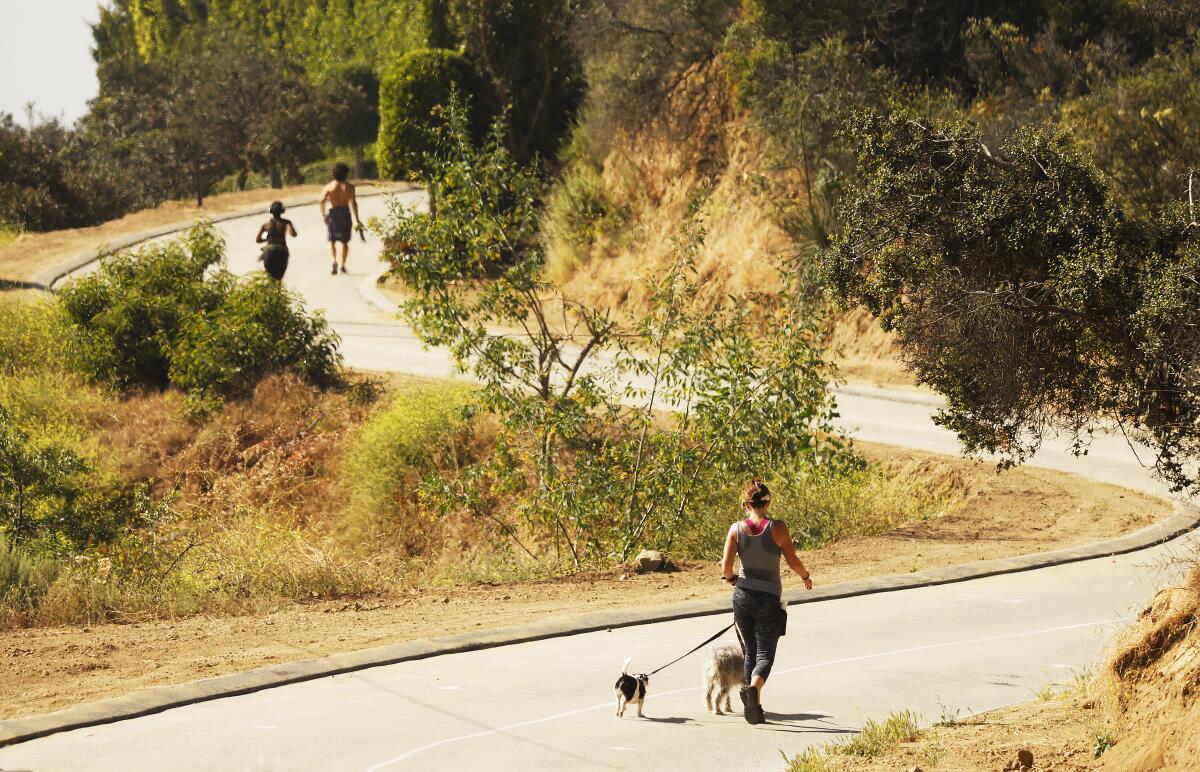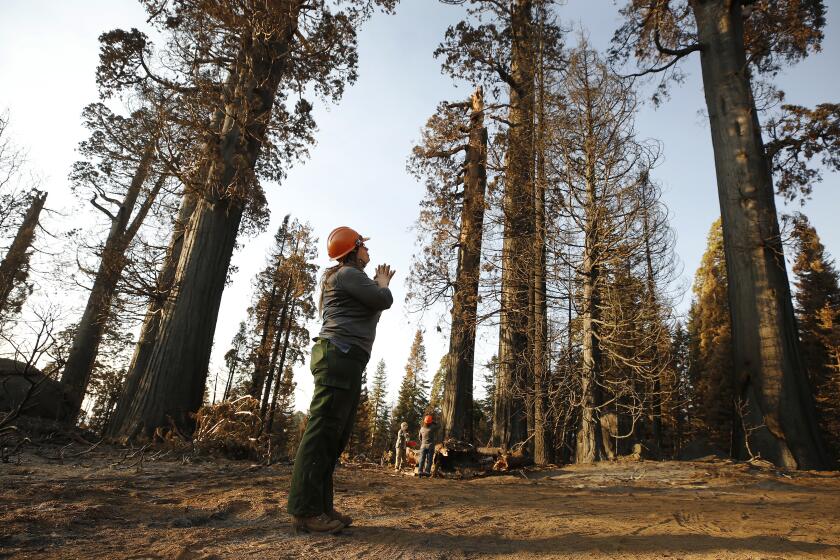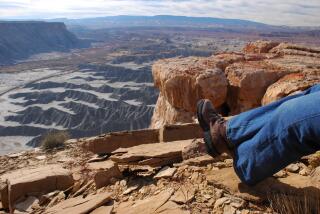Op-Ed: We need open space, and Washington can help us get it

- Share via
We who live in the West benefit from public ownership of 47% of the land across 11 states, most of it managed by federal agencies. It’s our wild backyard — mountains, forests and seashores available to all for free or for a nominal entrance charge. But only 4% of the land in the rest of the country is publicly owned, and even in the West, much of our “commons” is remote, far from cities where people may need it most.
Fortunately, we have a national program for adding to America’s open-space estate: the Land and Water Conservation Fund. Since 1964 a portion of the receipts from offshore oil and gas leases has gone to federal, state and local agencies to acquire and preserve land for recreation and conservation. Unfortunately, Congress diverted much of the money — $22 billion by one estimate — to other federal programs.
Then in 2019, after the fund came close to sunsetting, it was permanently authorized, and in 2020 the bipartisan Great American Outdoors Act mandated that the $900 million a year now set aside for the fund must be tapped solely for conservation and recreation.
The money is administered through four federal agencies — the National Park Service, the Bureau of Land Management, the U.S. Fish and Wildlife Service and the U.S. Forest Service — for state, local and national projects. In Southern California in recent years, Land and Water Conservation Fund dollars have helped refurbish L.A.’s Lincoln Park swimming pool, added to Runyon Canyon hiking trails and improved steelhead habitat in Malibu Creek. At the national level, the fund has increased park service holdings by more than 2 million acres. Imagine how much more could have been done with the billions Congress repurposed over the years.
Since the fund was established, our need for recreation areas and public land has only grown. Fifty-five years ago, the U.S. population was 194 million; today it’s 330 million, with most of us crowded into urban areas. The increase in outdoor activity during the pandemic — up sharply according to federal and local sources — is just one indicator of our collective need for more and better access to the outdoors. And the conservation fund’s programs have benefits that stretch far beyond recreation.
This year’s Castle fire killed hundreds of giant sequoias, the latest in a string of Sierra Nevada wildfires that is taking an alarming toll on the world’s most massive trees.
Consider, for example, the climate crisis. Each year billions of taxpayer dollars are spent trying to protect homes from fires, floods and sea level rise, much of it induced or made worse by global warming. Disaster relief follows, along with subsidies to rebuild, followed by a repeat of the whole process. Think instead how we could avoid public and private losses if those who have settled or invested in the path of fire and flood could have the option of selling their land for open space and recreation areas that can double as buffers against disasters and hazards.
In addition to tax savings and safety nets, parklands provide reservoirs of carbon sequestered in unlogged forests, reducing the greenhouse effect that’s the root cause of global warming. Land kept free from development protects watersheds that are the sources of our drinking water. And with climate change triggering a shocking loss of biodiversity, the U.S. should join 50 other nations in committing to protect 30% of the world’s wildlife habitat.
“Getting the annual appropriation for the Land and Water Conservation Fund was an extraordinary accomplishment in the last Congress,” said Zach Spector of the Western Rivers Conservancy. “The need now is to see that the federal and other agencies have the wherewithal to spend that money.” It is not an idle challenge, coming at a time when the government groups charged with protecting and adding to public land have lost staff, expertise and morale to attrition, erosion and outright hostility from the Trump administration.
Despite our divisions, many Americans agree that safeguarding more land for public use and conservation is how we improve America. The popularity of land-protection programs has been evident over the last several decades in the passage of multiple open-space bond initiatives in California. Sponsoring several, Jerry Meral, formerly of the Planning and Conservation League, said, “Voters repeatedly indicate that they support funding to secure more parklands and open space.” As another barometer of opinion, support for the Land and Water Fund in 2019 and 2020 came from both political parties, one of few issues to gain bipartisan votes during four years of toxic partisan mayhem.
We now have an opportunity to do for coming generations what insightful predecessors did for us when they set aside the parks, forests and vistas that we use and admire today. We must make sure Congress and the new administration double down on protecting our most valuable remaining open space.
Tim Palmer is the author of “America’s Great Mountain Trails,” “Rivers of California” and other books. timpalmer.org.
More to Read
A cure for the common opinion
Get thought-provoking perspectives with our weekly newsletter.
You may occasionally receive promotional content from the Los Angeles Times.











